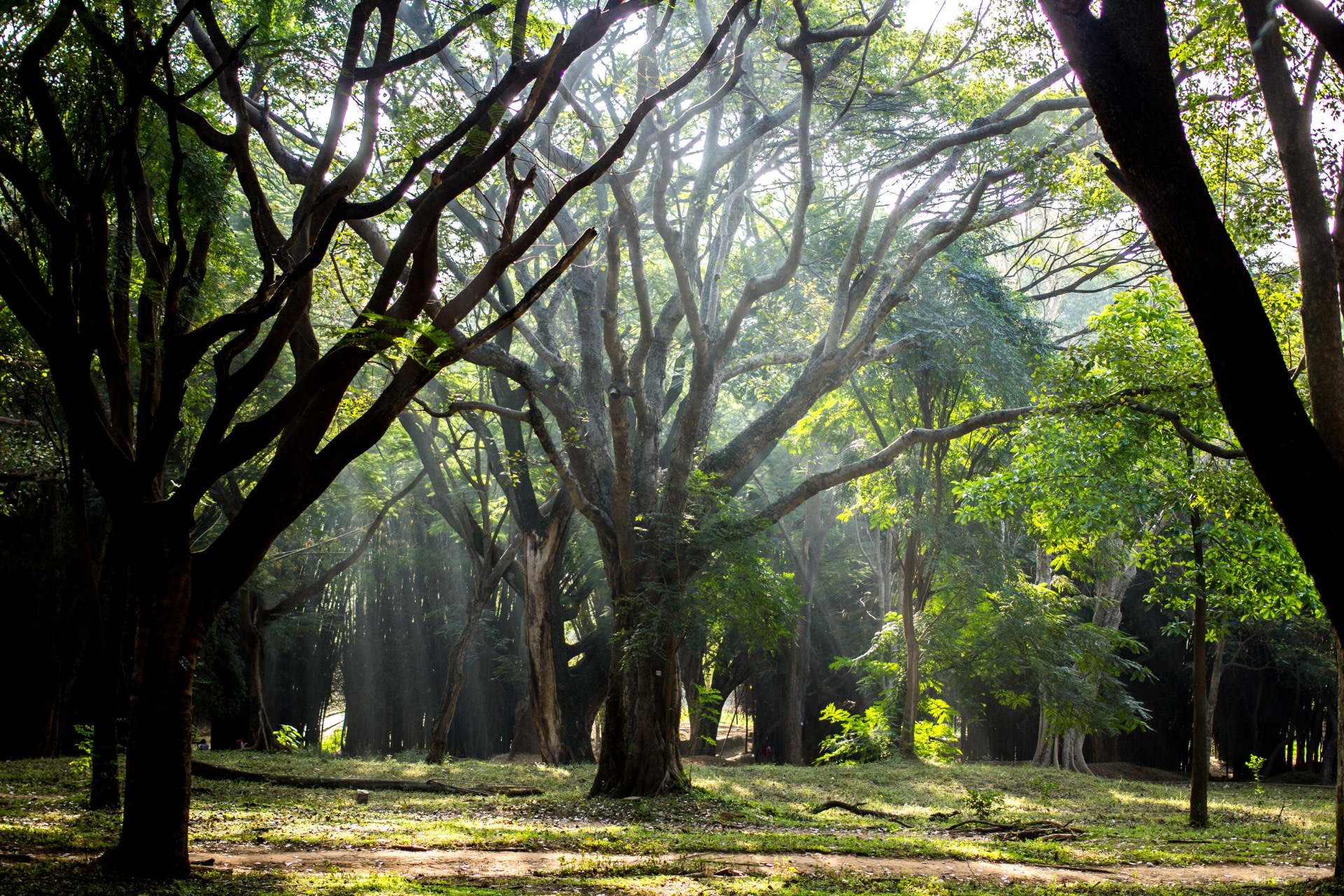 Listen to this article
•
15:34 min
Listen to this article
•
15:34 min
Bengaluru has all the traits one would associate with a city that went from being famously called the ‘Garden City of India’ to the ‘Silicon Valley of India’. It is a city that has recently also become infamous for its traffic jams and flammable lakes. However, it is not all doom and gloom for the city, and there are a few spaces that provide safe haven for a plethora of life. From birds eyeing a nesting spot, to joggers looking for a breath of clean air, Cubbon Park is one such sanctuary in the heart of central Bengaluru that acts as an oasis for the city’s biodiversity.

Cubbon Park’s trees are the city’s oldest. The park has avenues of bamboo groves and rain trees, a large number of flowering shrubs and plants, and a row of Australian chestnut trees planted in the early 20th century. Photo: Sandie088/Shutterstock
Birds galore
With a unique set of habitats, Cubbon Park plays host to a wide variety of birds. According to eBird observations alone, close to 100 species of birds have been spotted there. On a typical morning, the regular suspects are large flocks of pigeons, roosts of black kites near water bodies, and crows that are seemingly determined to show themselves up as the proverbial ‘boss’. On rare occasions, good old Cubbon Park may even surprise you with a bird that you wouldn’t normally expect to see there. In 2017, a black baza is said to have been spotted in the park. While I didn’t have the pleasure of meeting it, I was fortunate enough to chance upon a local bird of prey, the shikra.
What happens when you cross a ballet dancer with a fighter jet? As I watched it, the shikra answered that question. In one swift acrobatic movement, it snatched a small passerine bird straight out of the air.

Beneath the canopy
Since it was set up in 1870, Cubbon Park has gradually become the home of around 6,000 trees from nearly a 100 species. The fruiting trees attract a variety of interesting creatures of all shapes and sizes, from the barbet quartets that line the fig trees, to the squirrels scurrying around the mango trees.
While the canopy offers its own unique display of life, a closer look at the trunk, all the way down to the ground will reveal one of the park’s most underappreciated inhabitants: ants. Arboreal ants like weaver ants can be seen lining branches, while carpenter ants build elaborate colonies at the base of their favourite trees. While at the park, if you allow yourself to enter an ant’s perspective for a second, the whole park is suddenly bursting with action. A wire connecting two trees becomes an important corridor. A seemingly mundane patch of leaf litter suddenly transforms into a battleground between two colonies. A quiet stretch of mud suddenly becomes the path of a great migration.
Cubbon Park also played a role in the discovery of a new species of ant, Dilobocondyla bangalorica. So far, this species has only been seen in Cubbon Park, Lal Bagh, and the Indian Institute of Science campus where it was originally discovered. They have been found only on frangipani (Plumeria) trees, showing the delicate balance that exists between a plant and animal within the heart of a city.
Treasure troves in bamboo groves
Among the many habitats found within the park, bamboo groves have played host to a plethora of life. One such inhabitant was a bird whose tail is so distinctive that it needs little introduction: the Indian paradise flycatcher. The thought of finding this bird comfortably roosting right in the heart of the city is a testament to how the park acts as a safe sanctum for wildlife.
Like most things in life, the iconic bamboo grove recently went through its cycle of flowering and gradually withering. With nearly 200 bamboo plants no longer standing tall, the area looks unrecognisable to somebody that’s been visiting the park for nearly two decades. There are plans to replant nearly 400 bamboo saplings around the park to slowly recreate this signature habitat of the park.
Harmony
Cubbon Park is truly a space for everybody. Birding groups with their binoculars, tree-walk enthusiasts carefully examining canopies, joggers along the paths, and sports enthusiasts of all ages can be found on these grounds. Wedding photographers and wildlife photographers alike find it a good backdrop too. Poetry readings and the sounds of a ukelele complement the afternoon song of the oriental magpie robin, affirming that this park is home to diversity both ecological as well as cultural.

Heart and lungs of the city
Within Bengaluru city just a few green spaces like Cubbon Park remain to fight the stress we’re putting on our environment. With India’s current urbanised population estimated at 34 per cent, and this number expected to rise above 50 per cent by 2050, public parks may be one way we can grow sustainably. While it is imperative that we preserve our forested and protected areas, there is a lot that needs to be done within our rapidly growing cities as well. City parks may be a way of creating safe spaces for nature, and our curiosity and love for it.











